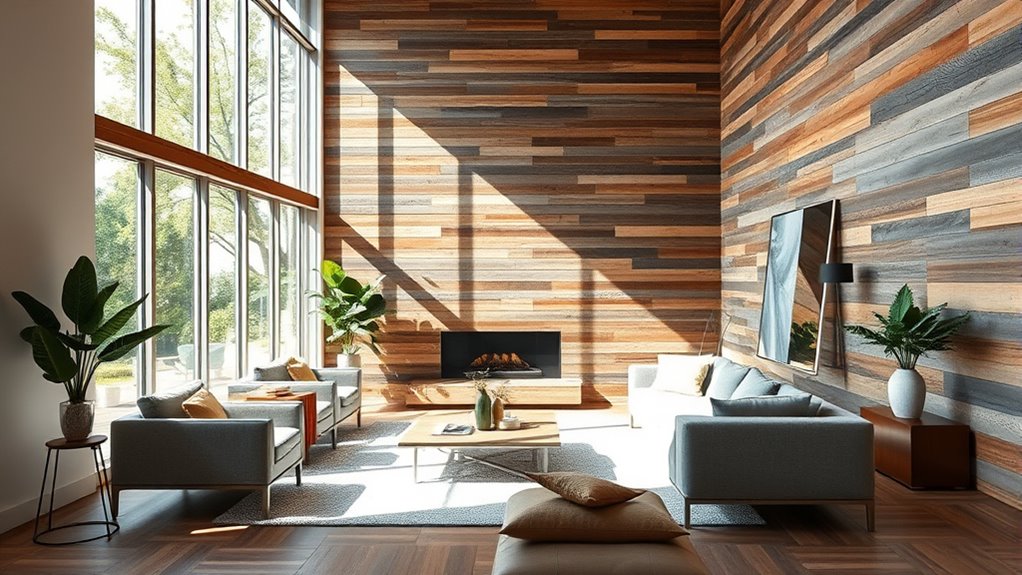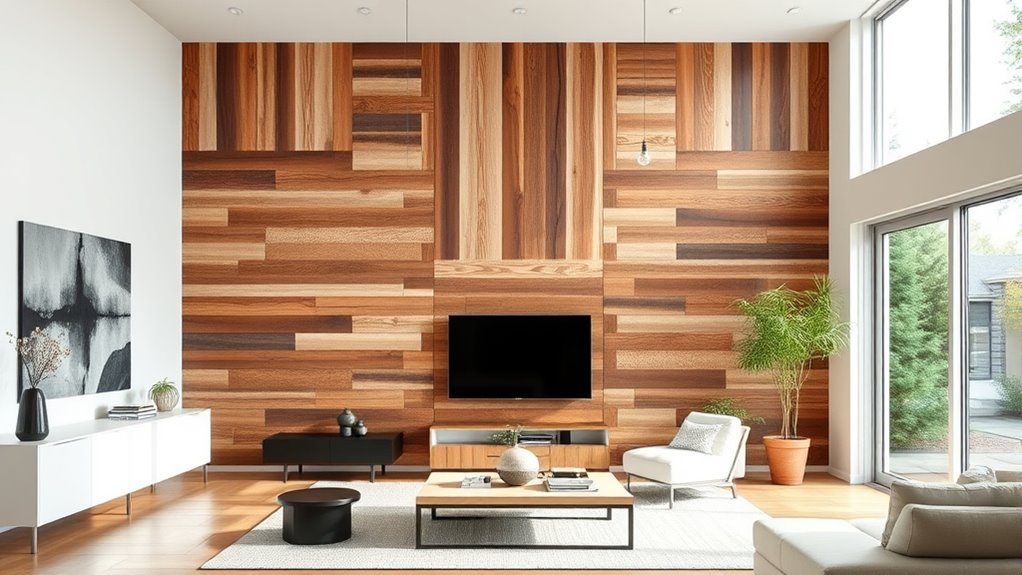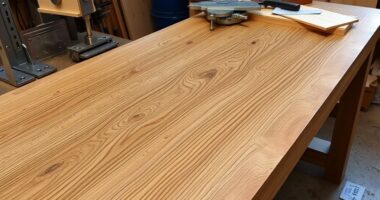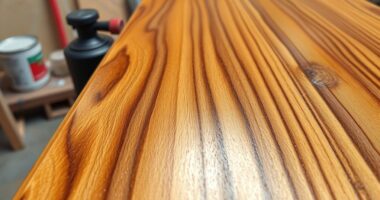Reclaimed wood is a smart, eco-friendly choice for your modern home. It’s salvaged from old structures, giving you unique character, weathered beauty, and durability while reducing demand for new lumber. Using reclaimed wood supports sustainability by lowering environmental impact and conserving forests. Its natural textures and rich history add warmth and personality to any space. If you’re interested in turning recycled materials into stylish design elements, exploring this option further reveals how it can enhance your home’s character and eco-consciousness.
Key Takeaways
- Reclaimed wood reduces environmental impact by reusing existing materials, conserving forests, and minimizing waste.
- It offers unique aesthetic qualities with weathered textures and rich patinas, enhancing modern home design.
- Sourced from old structures, reclaimed wood is durable, often stronger, and resistant to warping and shrinkage.
- Using reclaimed wood supports eco-conscious building practices and can contribute to green building certifications.
- Despite higher costs and limited availability, reclaimed wood provides a sustainable, character-filled option for stylish modern homes.

Ever wonder how old, weathered wood can find new life in modern design? Reclaimed wood is exactly that—a material salvaged from old structures like buildings, barns, factories, and warehouses. You mightn’t realize it, but each piece carries a story, a connection to the past, and a touch of history.
Reclaimed wood transforms old structures into stylish, storied design elements with eco-friendly appeal.
Sourced from various old sites across farms, industrial zones, and historic buildings, reclaimed wood boasts a distinct character shaped by natural weathering, giving it a rich patina and unique grain patterns. This aged quality isn’t just aesthetic; it also signifies durability and high quality. Many pieces come from old-growth trees, making them dense, strong, and long-lasting.
When you choose reclaimed wood, you’re making a sustainable decision. It reduces the demand for new lumber, helping conserve forests and protect endangered species. This eco-friendly option lowers your carbon footprint compared to harvesting and processing new wood. Reclaimed wood has a low environmental impact, making it an ideal choice for eco-conscious homeowners. Additionally, the process of repurposing old wood often involves careful cleaning and treatment to ensure safety and longevity. Moreover, reclaimed wood can contribute to green building certifications, further emphasizing its environmental benefits.
Plus, recycling wood from existing structures aligns with green building principles, often earning you certification benefits. By giving old wood a second life, you’re supporting efforts to minimize waste and promote environmentally responsible construction.
Reclaimed wood comes from a variety of species, including oak, pine, chestnut, maple, and cypress. The type often depends on the region of origin, which influences its appearance and properties.
For example, oak offers strength and a classic look, while cypress might bring a more distinctive grain and resistance to moisture. Because of their age and exposure, many of these woods are resistant to warping and shrinkage, making them stable and reliable for various uses. Different wood species each bring their own unique qualities to a project, allowing for a range of aesthetic and functional choices.
Their natural aging process can also grant some woods a degree of fire resistance, adding to their durability.
The visual appeal of reclaimed wood is truly unmatched. Each piece has a unique look, with weathering and patina that add charm and character. Its natural textures and colors can range from warm browns to silvery-gray hues, fitting many design styles—from rustic and traditional to sleek and modern.
You can also customize reclaimed wood by refinishing or repurposing it, creating one-of-a-kind furniture, wall paneling, or flooring. Its versatility allows you to incorporate it into nearly any project, bringing warmth and personality to your space.
Despite its many benefits, reclaimed wood isn’t without challenges. Its availability can be limited, and its higher cost reflects the sourcing and processing involved. Supply limitations may require patience and creativity when sourcing materials.
Still, the durability, environmental benefits, and aesthetic appeal make it a smart, stylish choice for your home. When you select reclaimed wood, you’re not just choosing a material—you’re embracing sustainability, history, and timeless charm in your living space.
Conclusion
Choosing reclaimed wood isn’t just about style; it’s about joining a story that stretches back through time, much like the timeless elegance of a well-worn book or a classic song. By integrating this sustainable material into your home, you become part of a movement that respects the past while shaping the future. Like the enduring beauty of a sunset, reclaimed wood offers a warmth and character that truly stands the test of time, inviting you to make history in your own space.









